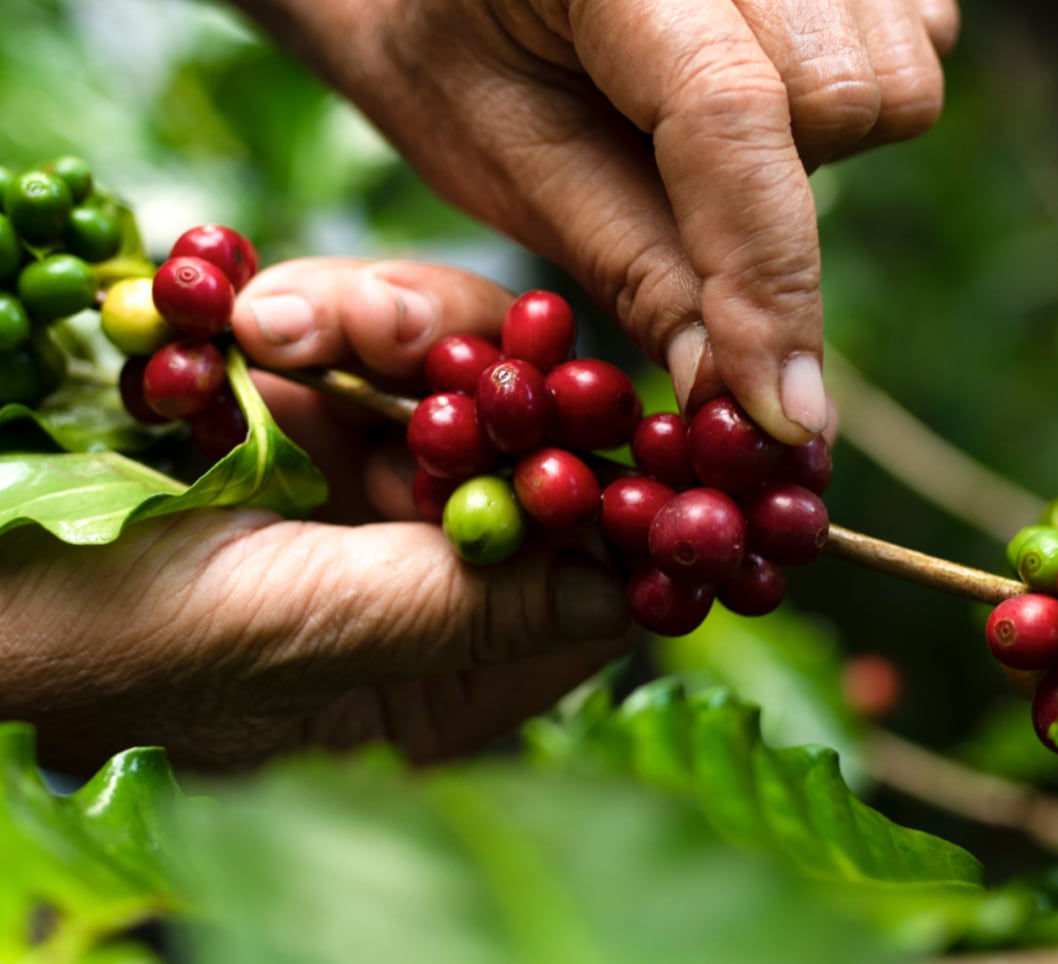Coffee journey
Coffee journey
The coffee plant is an evergreen shrub that belongs to the Rubiaceae family that originated in central and western sub-Saharan Africa.
In the wild, coffee plants can reach anywhere between 6 and 12 metres in height but for on the coffee plantations around the world, they are usually kept to a maximum of 2 metres.
There are two main species of coffee plant, Coffea Canephora – also known as Coffea Robusta – and Coffea Arabica.
Coffea Arabica gives us Bourbon, Catuai, Caturra, Maragogype, Pacas, Pacamara, Sumatra and Typica varieties as well as Bourbon Yellow, Catual Yellow, Caturra Yellow and Maragogype.
Coffea Robusta on the other hand is more resistant to disease and pests and generally has a much higher caffeine content. It is mostly grown in Vietnam, where French colonists introduced it in the late 19th century, but it is also grown in Africa and Brazil.

Coffea Arabica
Coffea Arabica gives us Bourbon, Catuai, Caturra, Maragogype, Pacas, Pacamara, Sumatra and Typica varieties as well as Bourbon Yellow, Catual Yellow, Caturra Yellow and Maragogype.
1 of 3Coffee Blends
2 of 3Coffea Robusta
Coffea Robusta is more resistant to disease and pests and generally has a much higher caffeine content. It is mostly grown in Vietnam, where French colonists introduced it in the late 19th century, but it is also grown in Africa and Brazil
3 of 3
The fruits of the coffee plant, called berries, drupes or cherries take about 9 months to ripen and are often grown in the shade of trees or fruit trees so that they’re not over exposed to the sun and the quality of their fruit is always preserved.
Coffee harvesting is the first step in the coffee making process. It usually occurs just once a year and can stretch over a period of a few months to guarantee all the fruits are ripened completely.
Although it might not seem like a complicated activity, there are in fact three very different harvesting methods used, each with its own specific set of challenges.
Manual picking, as the name suggests, is performed by hand by fruit pickers who only pick the perfectly ripe drupes. That means they have to return several times to the plants, which increases the time taken to complete the harvest. This method is mostly used to produce high quality washed and natural coffee with excellent fragrance and flavour after roasting.
Strip picking is exactly how it sounds. Trees are harvested in one go by hand “stripping” all the beans off the branches, collecting ripe as well as unripe cherries. Additional sorting is still required afterwards since the coffee cherries don’t all ripen at the same time.
Machine harvesting is only possible in flat areas and on plantations where the fruits ripen perfectly simultaneously. The harvesting machines are taller than the coffee plants and are equipped with brushes that shake the tree and cause the fruit to drop to the base, where they are collected. Very efficient and fast but the overall quality of the coffee is lower because not all the harvested fruit is ripe and fully developed.




Testo vario
Join us
Policies
Support